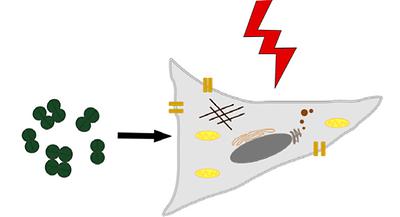Red light controls signaling in cells#
Optogenetics now enables the development of new methods that can be used like light switches to turn on and off specific processes in cells. Optogenetic methods are based on the isolation and modification of light-sensitive proteins in a first step and their subsequent incorporation into an individual target cell or an entire tissue. A paper by IST Austria researchers published in Angewandte Chemie International Edition describes successful red light experiments. Compared with the blue light mostly used in current approaches, red light has major benefits, particularly with respect to applications in model systems for diseases. Red light can penetrate deep tissues and can be employed without surgery in a non-invasive way; it has minimal cytotoxicity for human and animal tissues and has no effects on fluorescent proteins. Often used for various applications in research labs, florescent proteins tend to be activated or bleached by blue light.
For the light-sensitive protein, IST Austria Professor Harald Janovjak and his research group chose a photoreceptor which can be activated by red light. This photoreceptor was found in the cyanobacterium Synechocystos. In their study the authors modified the receptor and fused it with a mammalian receptor, which has been found significant for many diseases. Later, they successfully demonstrated in experiments that the red-light activation of the fused receptor could activate a signal pathway that plays a crucial role in cell division.
As a rule, cell division is activated by so-called growth factors. They are the reason why two receptors undergo a binding and activation process, marking the start of cell division. The researchers managed to induce the binding and activation process by combining the receptors and using red light. Additionally, they showed that the fused receptor could be activated by red light even across tissue in cells which are used in model studies for diabetes.
